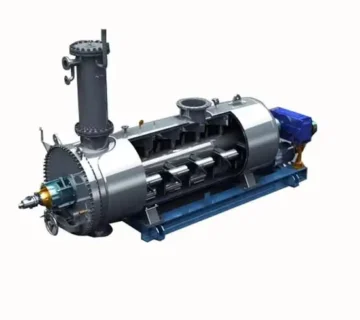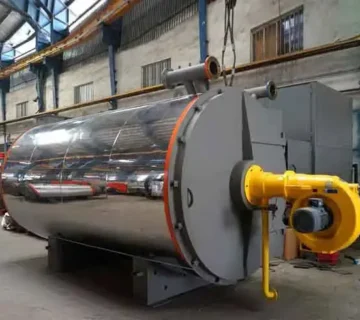Innovative Technologies in Rendering Cookers: A Modern Solution for Waste Recycling and Improved Efficiency
The slaughterhouse and animal waste processing industry has seen significant advancements in recent years. One of the most critical aspects of this industry is managing and recycling slaughterhouse waste. In this domain, the use of rendering cookers has emerged as one of the most effective methods for converting animal waste into valuable by-products. With technological advancements, these cookers have been upgraded, utilizing innovative methods to increase efficiency, reduce energy consumption, and minimize environmental pollutants. In this article, we will explore the latest technologies in rendering cookers and their impact on the slaughterhouse industry.

1. Automated and Digital Control Systems
One of the biggest transformations in rendering cookers is the implementation of automated and digital control systems. These systems allow for precise management of the cooking process, reducing human errors and increasing accuracy. With these technologies, operators can automatically adjust the temperature, pressure, and cooking time, optimizing the performance of the equipment.
Not only do these systems optimize the cooking process, but they also provide real-time monitoring, offering precise information on the status of the device and production process. This data can help reduce maintenance costs and prevent potential breakdowns by predicting when repairs are needed.
2. Energy Consumption Optimization
Given the importance of energy savings and reducing operational costs, one of the primary goals of the slaughterhouse industry is optimizing energy consumption in waste recycling equipment. Modern rendering cookers now utilize heat recovery systems, which can save up to 30% of energy consumption. These systems use the heat generated during the cooking process to power other parts of the plant, significantly reducing energy costs.
Additionally, the use of green technologies in these devices helps to lower greenhouse gas emissions, contributing to a smaller environmental footprint. This allows slaughterhouses and factories to move toward sustainable production while adhering to environmental standards.
3. Use of Heat and Corrosion-Resistant Materials
The durability of the equipment in rendering cookers is critical due to exposure to high temperatures and corrosive substances. With advancements in technology, the use of heat-resistant alloys and anti-corrosive materials has increased in the construction of these cookers. These materials not only enhance the lifespan of the equipment but also reduce the need for frequent maintenance and repairs.
Using such advanced materials also lowers maintenance costs and increases safety during the production process. This is especially important for large-scale industrial slaughterhouses that handle high volumes of waste.
4. Advanced Filtration Systems
With advancements in filtration and purification technologies, new rendering cookers are now equipped with advanced filtration systems. These systems use specialized filters to prevent the release of harmful gases and airborne particles. This technology helps slaughterhouses comply with environmental and health standards, minimizing the risks associated with air pollution.
Filtration systems not only improve air quality in the working environment but also allow for the recovery of gases and airborne particles, which can be used to produce valuable by-products.
5. Integration of Smart Technology and IoT
Another cutting-edge technology used in rendering cookers is the integration of smart technologies and the Internet of Things (IoT). These technologies enable communication between different devices and systems, collecting and analyzing data in real-time.
Using IoT in rendering cookers allows slaughterhouses to manage the production process more precisely and efficiently. Moreover, IoT helps predict technical issues and equipment breakdowns, reducing downtime and increasing overall productivity.
6. Technologies for Enhancing By-Product Quality
One of the primary goals of using rendering cookers is to produce high-quality by-products from slaughterhouse waste. With the help of innovative technologies, the quality of products such as meat meal, industrial fats, and even biofuels has improved significantly. These technologies help reduce impurities and increase the purity of the final products, thereby increasing their value in the market.

Conclusion
With the rising demand for sustainable waste management and the importance of reducing energy consumption and preserving the environment, the use of innovative technologies in rendering cookers has gained great significance. These technologies help reduce operational costs, improve productivity, and create high-value by-products. They also enable slaughterhouses to move toward sustainable production by adhering to environmental and health standards.
Using modern rendering cookers not only helps reduce waste and preserve the environment, but it also allows the meat processing and food production industries to enhance their efficiency, reduce costs, and increase profitability. In the near future, these technologies will play a crucial role in the growth and development of the slaughterhouse industry.




